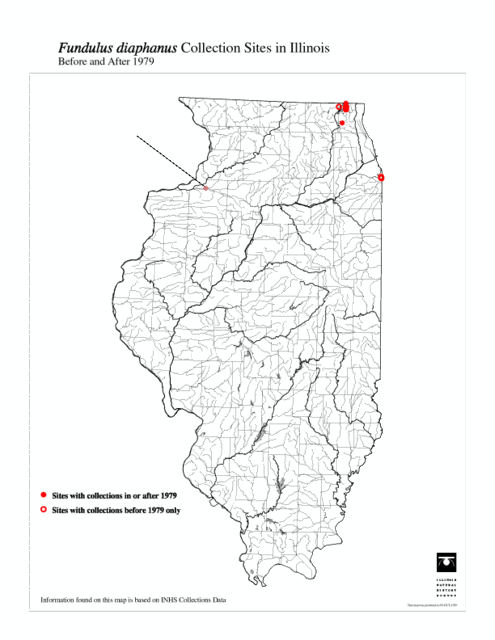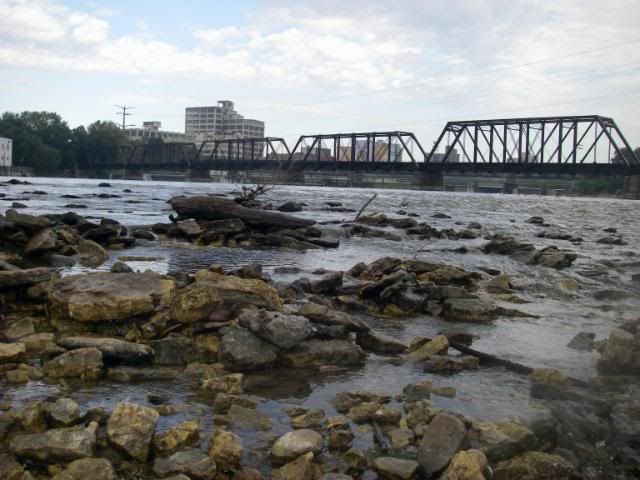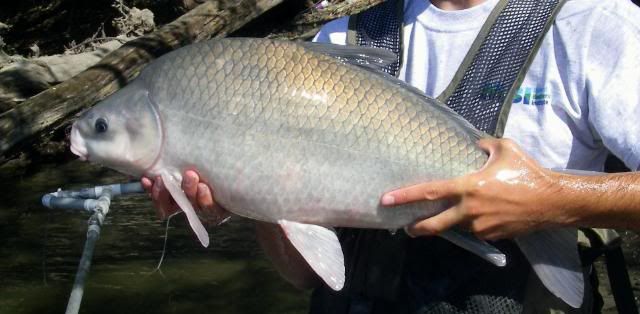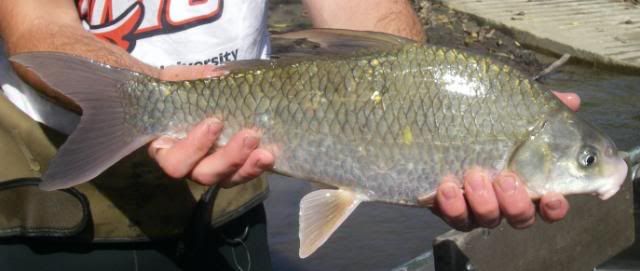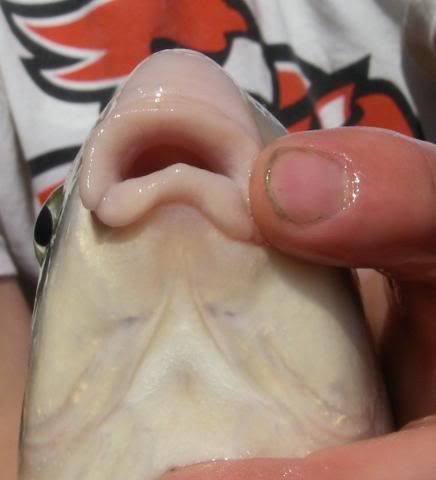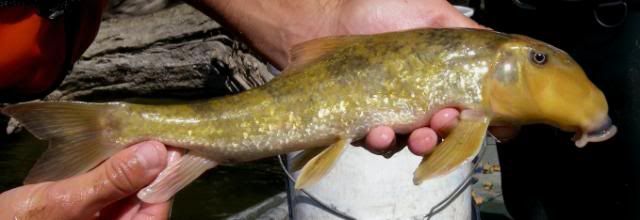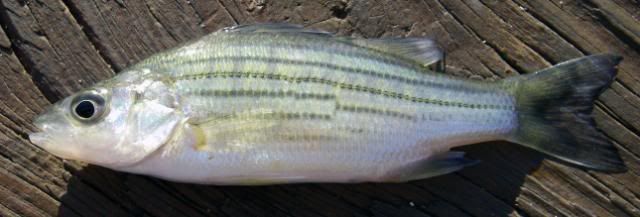Date: September 28, 2007Location: Kishwaukee River near New Milford, IL. In the Kishwaukee River Forest Preserve. At Blackhawk Rd. and Milford Rd.
Water Level: Slightly higher than usual levels for this time of year. The max depth was 1.5m. There were a few gravel bars and cobble run areas that were shallow between the pools.
Water Quality: Slightly stained. Some siltation on the bottom of the pools. Areas that really any flow (the gravel bars and the cobble runs) were free of silt however.
Water Temp.: 17.4*C
Substrate: Sand and gravel mostly. The runs had nice sized cobble and gravel. There were some fallen trees that provided excellent cover. Bends in the river that had scoured out pools had fallen trees in them as well. These were areas where the fish concentrated.
Collected:American Brook Lamprey (Lampetra appendix)
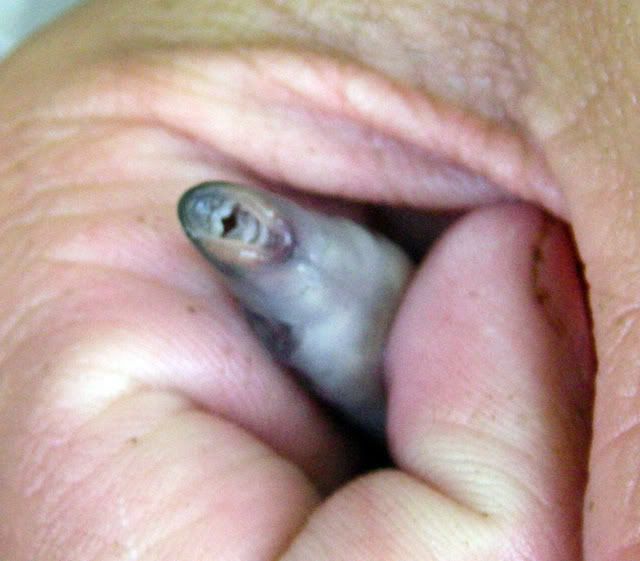
only found one here. They really dont sit still too well for a dry photo and we didnt have any photo tanks to take pictures of this fish in. Brian was doing the netting here and I believe he found this one on the downstream side of a large riffle that emptied into the biggest pool in that 500m stretch of the river.
Grass Pickerel (Esox americanus vermiculatus)

- found a few near some slack water, near some fallen trees.
Common Carp (Cyprinus carpio) a few large ones.
Western Gravel Chub (Erimystax x-punctatus x-punctatus)

- a few were found here. There was lots of suitable habitat here. We found only 5 in a 500m stretch though. They are at their peak abundance in Illinois when they are in the Rock River and its tributaries.
Suckermouth Minnow (Phenocobius mirabilis) a few were here in the swifter moving areas.
Central Striped Shiner (Luxilus chrysocephalus chrysocephalus) not as common as some of the other cyprinids here. There was good diversity between cyprinids here.
Bluntnose Minnow (Pimephales notatus) very abundant (100+)
Spotfin Shiner (Cyprinella spiloptera) also very abundant (100+)
Emerald Shiner (Notropis atherinoides)
Carmine Shiner (Notropis percobromus)
Sand Shiner (Notropis stramineus stramineus) very abundant here as well. This was probably a function of the clean sand and gravel habitat.
Central Stoneroller (Campostoma anomalum pullum)
Bigmouth Buffalo (Ictiobus cyprinellus) a few large ones were in the deepest hole, alongside most of the large Catostomids
Highfin Carpsucker (Carpiodes velifer) a few large adult fish were in that hole.
River Carpsucker (Carpiodes carpio)
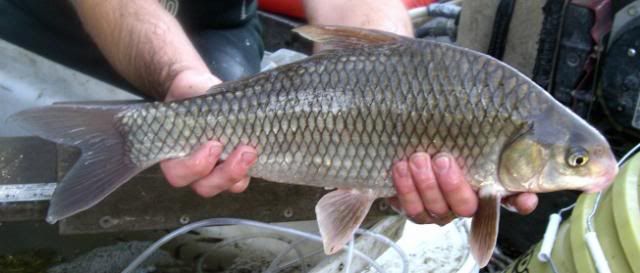
- these fish were very abundant here. We found mostly adult sized fish.
Northern Quillback (Carpiodes cyprinus cyprinus) also very abundant in the deeper areas of this site. Most fish were large adults.
Central Quillback (Carpiodes cyprinus hinei) found all the Carpiodes species here in good numbers. All were large and very healthy looking. This speaks well of the stream as we also found 4 Moxostoma species in good numbers here.
Black Redhorse (Moxostoma duquesnei)
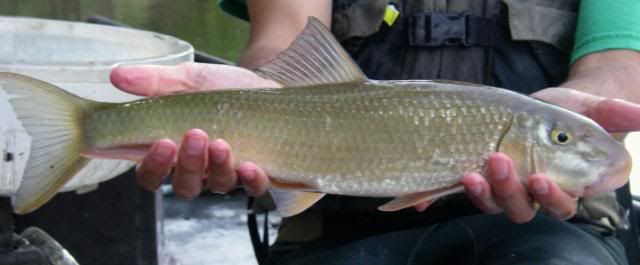
lots of adult sized fish in this area. It really looked to be more of ideal Black Redhorse habitat than Golden Redhorse, but we found both in equal numbers and size. It was really easy to tease the Golden Redhorse apart from the Black Redhorse at this site because we had big numbers of adult fish. The Black Redhorse definitely has a more slender appearance.
Golden Redhorse (Moxostoma erythrurum)
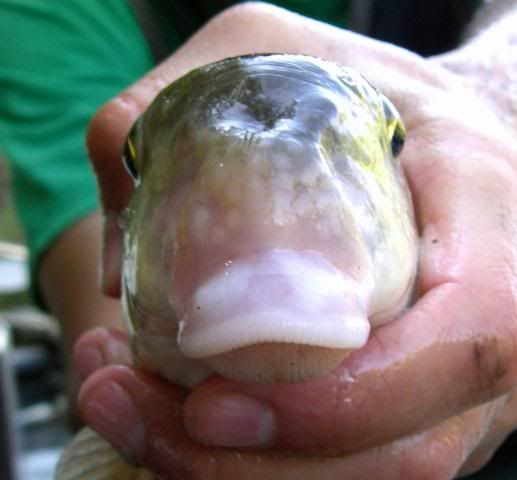
as with the other Catostomids, very abundant and large. The fish pictured here was a male that had signs of previous tuberculation.
Silver Redhorse (Moxostoma anisurum)
Shorthead Redhorse (Moxostoma macrolepidotum)
White Sucker (Catostomus commersonii commersonii)

- only found one of these. It was surprising to see them mixed in with these large river species.
Northern Hogsucker (Hypentelium nigricans) lots of large ones of these as well.
Channel Catfish (Ictalurus punctatus) lots of large ones were in all the deeper pools. This area was loaded with large, healthy fish.
Stonecat Madtom (Noturus flavus) a few were in the riffles, they werent very abundant here though.
Northern Largemouth Bass (Micropterus salmoides salmoides)

- only a few short fat ones like this one were found here. This spot was ideal Smallmouth Bass habitat.
Northern Smallmouth Bass (Micropterus dolomieu dolomieu) lots of large ones in this sample.
Black Crappie (Pomoxis nigromaculatus)
Rock Bass (Ambloplites rupestris)
Warmouth (Lepomis gulosus) found one of these in the deeper pool with the Catostomids.
Pumpkinseed Sunfish (Lepomis gibbosus) just one.
Bluegill Sunfish (Lepomis macrochirus macrochirus)
Green Sunfish (Lepomis cyanellus)
Walleye (Sander vitreus vitreus)
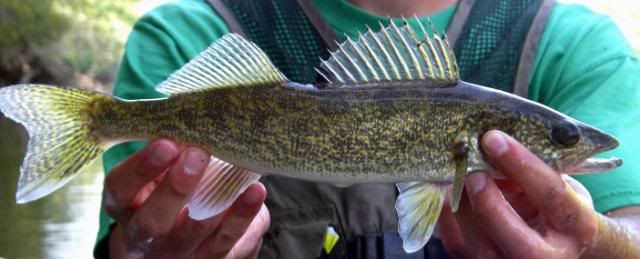
found a few in the sand bottomed pools.
Slenderhead Darter (Percina phoxocephala) a few in the riffles.
Blackside Darter (Percina maculata)
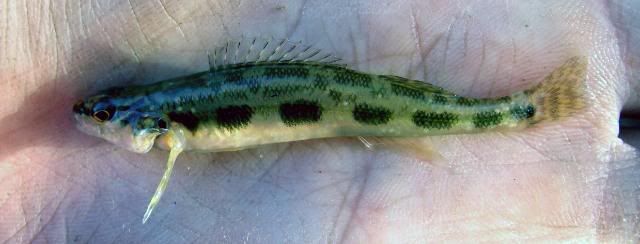
in and around the fallen trees by the shoreline. Usually found in water shallower than 1m.
Rainbow Darter (Etheostoma caeruleum) very abundant in the riffles and in the cobble run areas.
Banded Darter (Etheostoma zonale) just as abundant as the Rainbow Darters, and found in the same areas.
Freshwater Drum (Aplodinotus grunniens) only a few in the deeper pools here.
Notes: Being in the forest preserve, this watershed seemed very intact. Very distinguishable riffle, run, pool habitat. While I was waiting for Bob and Brian to get done with one of the deeper pools I fished from the canoe. I caught Smallmouth Bass and Walleye from the canoe, and even snagged a Shorthead Redhorse. Id like to spend some time in this area in the future fishing.


